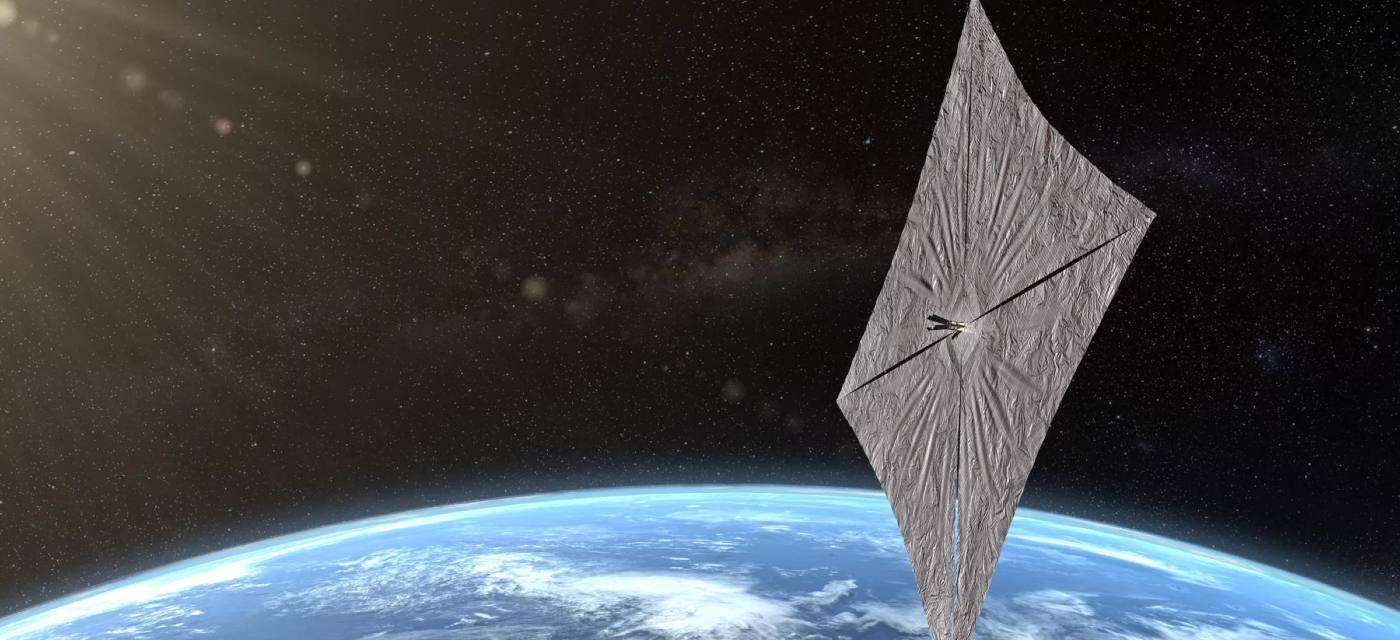SpaceX Launches Historic Flight for NASA, Shuttling Astronauts via First Class to International Space Station
NASA's first-ever commercial flight will carry the Crew-1 Mission astronauts to the ISS aboard a SpaceX Falcon 9 rocket.

An American astronomical society is proving that, like the Vikings of old, exploration of foreign shores-in this case foreign planets-is possible if you but master the use of the humble cloth sail.
LightSail 2, designed and crowd-funded by the Planetary Society, is a small spacecraft that has been moving around at high-speeds in Earth's orbit, and turning direction by capturing solar photons with a square sail the size of a boxing ring.
Having launched in July 2019, the vessel has spent over a year meandering about 186 miles (300 kilometers) above the International Space Station, at 460 miles above Earth, it has produced a trove of scientific data which mission engineers at the Planetary Society will use to advance humanity's understanding of solar sailing-potentially, it will be a very important and reliable form of space travel in the decades to come.
Now LightSail 2 is entering the extended mission phase, where scientists will study how things like orbital decay-the degree to which the spacecraft's trajectory gradually falls, similar to how a hula hoop falls when it stops spinning-will affect the bread loaf-sized craft as it slowly falls towards Earth and eventually burns up on re-entry.
"During our extended mission we'll continue making changes to our sail control software, which will help future solar sail missions optimize their performance," states Planetary Society chief scientist and LightSail 2 program manager Bruce Betts.
The little ship moves at the whim of two powerful forces: gravity and the sun, which one might imagine as acting like an ocean current and the wind.
LightSail 2 is in orbit like a satellite around the earth, and so the scientists must steer, recharge batteries, and take photographs in response to where its orbit, which due to the non-spherical nature of our planet is quite wobbly, takes it.
However, for about 28 minutes of its 100-minute orbit, it can turn its 34-square meter sail, which rather than absorbing the light like normal cloth, repels it thanks to its reflective material called Mylar.
The momentum of mass-less traveling photons bouncing off the sail gives it a slight push to be able to steer itself during those 28 minutes, proving that solar sailing is viable for use in steering and propelling "CubeSats"-smaller satellites that will really push the boundaries of space exploration, not least because a solar-sailing spacecraft doesn't need chemical propulsion.

In 1608, Johannes Kepler theorized that the sails of ships could be adapted for the "heavenly breezes," and 300 years later, fiction writer Arthur C. Clarke published "The Sunjammer," about a solar sailing vessel.
Famous American astrophysicist Carl Sagan, co-founder of the Planetary Society, presented a model of a solar sailing spacecraft which NASA had designed to visit Halley's Comet on The Tonight Show with Johnny Carson in 1976, but it was only three years after Sagan's death that the Society he helped start began designing the solar sailing vessels which would eventually lead to LightSail 1 and 2.
With its sail and small area-to-mass ratio, this spacecraft can resist the drag of the earth's atmosphere which would have resulted in a normal satellite falling back down to the surface much faster. The Society had envisioned it crashing by now, but this new timeline of orbital-decay which they are studying in the extended mission phase will provide NASA and other entities that want to deploy a solar sailing spacecraft with invaluable calculations.
Future missions will take place at higher orbits, or even on interplanetary trajectories, where there will likely be much more sailing than spinning going on. NASA's NEA Scout will ride a Space Launch System rocket to an area near the Moon before deploying its solar saii to ride cosmic winds on a visit to an asteroid.
LightSail 2 data is directly supporting NASA's solar sailing programs which the agency describes as being capable of "conducting orbital plane changes more efficiently than spacecraft using conventional chemical propulsion," and "of achieving remarkable speeds, enabling rapid exploration of the outer solar system."
It's a tremendous achievement for the Planetary Society, who created the entire program, from blueprints to the extended mission phase.
This body of work has stretched over a decade, on just $7 million, gathered from Planetary Society memberships, private donations, foundational support, corporate partners, and a 2015 Kickstarter campaign which holds the record for the most successful space-related Kickstarter in history; raising $1.24 million via 23,500 backers.
"Even a year later, I am inspired and humbled by the tens of thousands of passionate individuals who came together to make this mission a reality," said Planetary Society chief operating officer Jennifer Vaughn. "As we celebrate the success of LightSail 2's primary mission, we're also celebrating the power of everyday people working together to explore space."
SAIL This Space News Over to Friends on Social Media…
Be the first to comment